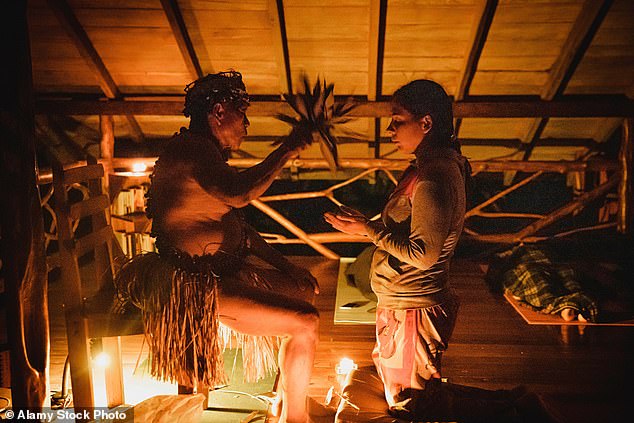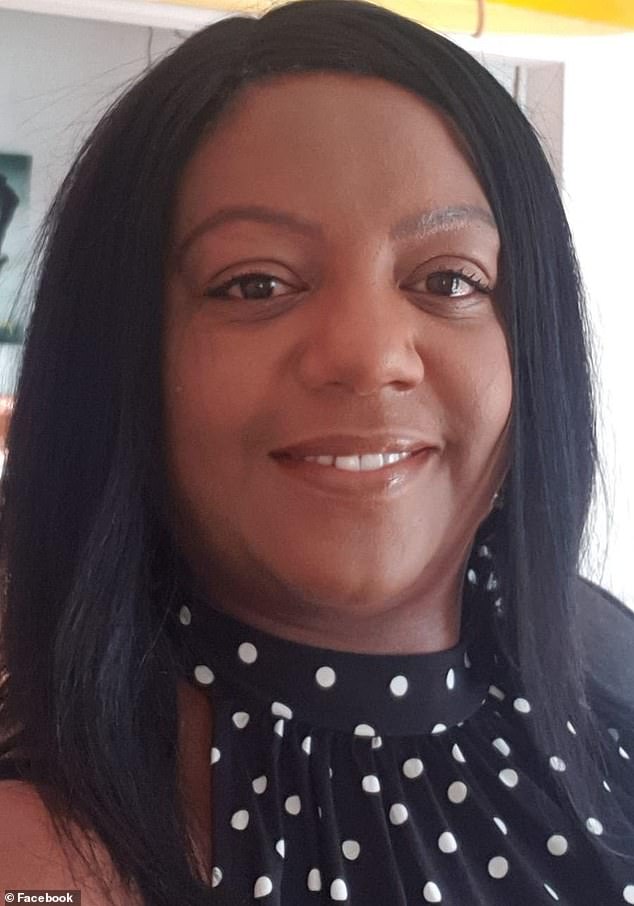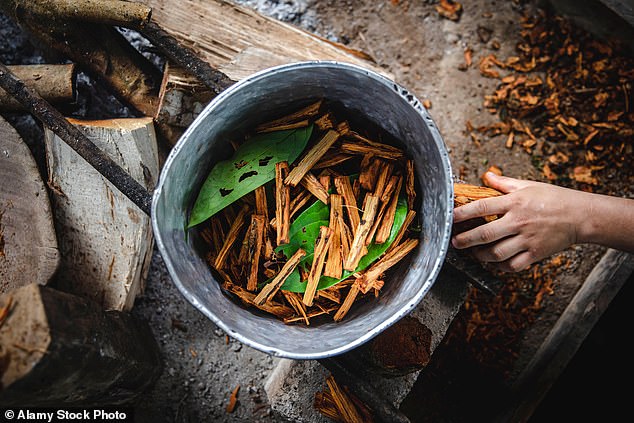Minute by minute, how the screaming horror unfolds – what it’s REALLY like to take ayahuasca, the South American hallucinogenic brew praised by Prince Harry but linked to a string of tourists’ deaths

Psychedelic tourism is booming, and nowhere more so than in the tranquillity of the Amazonian rainforest.
Not since the 1960s has the power of the hallucinogen had quite such an appeal. Except these days it’s not the synthetic allure of LSD that’s proving the draw, but the intoxicating power of what the natural world can deliver.
And deep in the jungles of South America, the potency of ayahuasca, an age-old hallucinogenic brew, is in no doubt.
The psychedelic component of the plant-based drink makes it a class-A drug in the UK and illegal.
And yet, for centuries, Amazonian tribes have hailed the properties of the ‘tea’ – a blend of the leaves from one plant and the vines of another – for providing an expanded state of consciousness, using it for religious and healing purposes.
So perhaps it was inevitable that what was once part of indigenous shamanistic tradition, would eventually explode into the world of wellness and the trend towards ‘self-exploration’.
Today, it is lauded in some quarters for its allegedly transcendent, healing properties, with Will Smith, Lindsay Lohan and Sting among ayahuasca’s celebrity fans, along with numerous Silicon Valley head honchos.
In an interview last year, Prince Harry credited his experience with ayahuasca with helping him to deal with past traumas, including the death of his mother, Princess Diana.

Not since the 1960s has the power of the hallucinogen had quite such an appeal. Except these days it’s not the synthetic allure of LSD that’s proving the draw, but the intoxicating power of what the natural world can deliver
And, of course, where the celebrity wellness drum sounds, so the rest follow. For thousands of British travellers, taking part in an ayahuasca ceremony while visiting the jungles of Peru, Bolivia, Ecuador and the like is all part of the experience.
Maureen Rainford, 54, travelled to the Ayahuasca and San Pedro Pisatahua Retreat in Bolivia last month, paying £800 for a ten-day visit to the Amazon commune billed as a wellness and detox retreat.
The social worker, from Romford, Essex, was reportedly fit and healthy before the visit. But shortly after drinking ayahuasca tea, her family were told, she collapsed and died.
‘I want to raise awareness about these places for people tempted by glossy brochures selling a dream,’ said her devastated daughter Rochel, 32, this week.
Meanwhile, a spokesman for the retreat insisted ‘her passing was due to a medical emergency that was not related to ayahuasca’.
What part – if any – ayahuasca played in Maureen’s death may never be known. But the fact remains that the trippy trend is booming, bringing with it growing concerns of a worryingly dark side to this ancient ritual.
So what exactly is ayahuasca, or yage as it’s sometimes called?
The concoction is best known for causing vivid visions, which proponents say can alter your world view – the plant is sometimes referred to as the vine of the soul or the vine of the dead.
Served in the tea associated with ayahuasca ceremonies, it is a thick, dark substance, mashed and boiled from the components of two plants – the ayahuasca vine (Banisteriopsis caapi) and the leaves of the Chacruna (Psychotria viridis).

Maureen Rainford, 54, travelled to the Ayahuasca and San Pedro Pisatahua Retreat in Bolivia last month. Shortly after drinking ayahuasca tea, her family were told, she collapsed and died
The plants are boiled in the same bowl and typically prepared in a ceremony led by a shaman or traditional healer called a curandero. The strength of the brew depends on the brewer and on the number of consecutive days it is taken on (yes, it’s not always a one-off).
The first notable feature is the foul taste. Then it can take around 30 minutes for the effects to kick in and is associated with vivid visions and hallucinations, not to mention the rather unpleasant capacity the substance has to make the body void itself (users are handed buckets at ayahuasca ‘ceremonies’ to cater for the violent vomiting that the drug triggers). After all that, peace may be found.
The hallucinogenic properties of the drink are due to a component called dimethyltryptamine (DMT), a particularly potent hallucinogen, currently the subject of numerous scientific studies looking at its potential use in conventional medicine.
The hallucinogenic effect can be profound. In 2018, a study found that DMT produced effects strikingly similar to near-death experiences in all 13 participants. Scientists at Imperial College, London, which is blazing a trail in researching such psychedelic drugs, say DMT distorts brain waves to create a vivid ‘waking-dream’ state.
In South America, ayahuasca is an integral part of some tribal societies; and in 2008, Peru’s government recognised ayahuasca’s status, stating that it was ‘one of the basic pillars of the identity of the Amazon peoples’.
Wellness retreats may be a growing segment of the travel industry, but the use of psychedelics is anything but new. Indigenous Americans have been using mescaline – a drug from the peyote cactus – for 5,000 years. In 2019 an archaeological dig at a Bolivian cave uncovered a leather pouch, fashioned from three fox snouts, dating back to around AD 900 to 1170, with traces of brain-altering DMT.
Practitioners credit the traditional medicine with all manner of benefits, from helping tackle addiction and depression to overcoming fears.
Singer Sting spoke of his experience with ayahuasca in 2005, comparing it to being ‘wired to the entire Cosmos’.

The psychedelic component of the plant-based drink makes it a class-A drug in the UK and illegal
‘I realise for the first time this is the only genuine religious experience I’ve ever had,’ he wrote.
Prince Harry first mentioned his own experience with ayahuasca in his explosive memoir Spare, going on to discuss it in an interview with author and trauma expert Dr Gabor Maté, in which he compared it to ‘the cleaning of the windscreen, the removal of life’s filters’.
But the death of Maureen Rainford last month is not the first time the alarm bell has been sounded. In 2018 a coroner warned against taking part in tea-drinking rituals after the death of backpacker Henry Miller, a 19-year-old from Bristol who paid £13 to try ayahuasca during a gap year trip to Colombia.
And two young British women are known to have taken their own lives after taking ayahuasca. One of them was actress and artist Kate Hyatt, who was 32, and is thought to have taken the drug in the UK.

In an interview last year, Prince Harry credited his experience with ayahuasca with helping him to deal with past traumas
Last year her mother, Michelle Hyatt, spoke out after Prince Harry’s glowing account of his own ayahuasca experience.
‘I am angry and disappointed,’ she said. ‘The experience Prince Harry described does not correlate with my daughter’s. He has a platform – discussing the use of that drug to help mental health is disgraceful.
‘Ayahuasca is marketed as plant-based healing, but it is no different to buying a bag of heroin on a street corner. With Kate, it made her unrecognisable from the person she was before and contributed to her suicide.’
The surge in demand among non-native Amazonians for ayahuasca experiences, which can cost thousands of pounds, is not without controversy. As well as the drug being known to be dangerous for those with heart problems, some denounce it as cultural appropriation or a ‘cure-all’ scam.
The Foreign Office website tells travellers to Peru: ‘Shamans offer ‘spiritual cleansing’ (ayahuasca or San Pedro) to tourists in the Amazon area, northern Peru and Cusco. This often involves drinking a brew containing dimethyltryptamine (DMT), a hallucinogenic drug that is a class-A substance in the UK.
This brew is not regulated and its effect on existing medical conditions is not well understood. People have become seriously ill and, in some cases, died after taking part. Spiritual cleansing retreats are usually far from populated areas, making it difficult to get medical attention. There have also been reports of sexual assault during ceremonies.’
The warning could not be clearer. And now, tragically, Maureen Rainford must be added to the list of those who may have come to harm after drinking it.
Minute by minute, how the screaming horror unfolds
I was only a week into a three-week tour of South America during my university holidays when the word ‘ayahuasca’ first came up.
In this part of the world, drinking the plant-based tea has become a tourist attraction as famous as Machu Picchu.
My friend Milly and I had arrived in Lima, Peru, without a plan, so were intrigued by the idea of going to the jungle for a ceremony that promised to ‘open our minds’.
Little did I know how extreme an experience it would be.
At first I was excited – ayahuasca is framed not as a party drug, but as a gateway to a spiritual, healing experience – and when three American tourists told us they were travelling an hour’s flight inland to a retreat in the rainforest offering ‘tea-drinking ceremonies’, I signed us up, too.
The place was full of tourists, ranging in age from 20 to 38 years old. We stayed in little huts, paying 200 sol each for the ceremony (about £40 then).
On the day, the on-site cook made lunch, after which we were told we weren’t allowed to eat or drink anything – only tiny sips of water. By 9pm, I was ravenous and very nervous.
We were instructed to wear loose clothing and only those taking the drug were allowed to attend; it was a deeply personal experience, we were told, and no one should feel ‘watched’.
Milly, who decided not to partake, had to stay behind in our hut. The rest of us were led a short walk away to a clearing.
The man running the ceremony – a tribal chief, apparently – was dressed in traditional South American shaman clothes: bare-chested, with loose trousers and chunky jewellery.
The pre-prepared tea was hot and tasted truly vile – like a kind of raw diluted soil, or even sewage.
Eight of us sat in a circle and everyone took the same amount poured into the mugs we’d been given. This worried me further. Did we not need to take into account our different body weights and heights?
I remember gagging when I drank it and it wasn’t long before a young slim woman from Italy left the circle to vomit.
After drinking the tea it can take between 20 to 60 minutes for the effects to kick in, and visions, or hallucinations, can last for up to eight hours, though six is more common. I immediately felt an overwhelming queasiness, then, embarrassingly, a fear of sudden diarrhoea. Around 30 minutes later I was being physically sick just outside the circle.
Across the room, someone sat in a slightly swaying motion, wide-eyed and unsmiling. Another man started crying.
What came over me next was a wave of complete horror, a feeling I couldn’t escape for around eight hours afterwards. I was convinced everyone I knew had died and I was completely alone. My heart raced and I was engulfed by a sense of pure panic.
Anything experienced in this time is seen as part of your personal ‘journey’ – it’s about ‘confronting yourself’ – so unless someone literally has a heart attack, you are left to feel all the fear and terror until it wanes.
It was terrible.
I started crying with a kind of grief that I’d never experienced before and haven’t since. It felt then like something I’d never get rid of, but would sit in me for ever. I was grief.
I was vaguely aware of everyone else around talking to themselves, but I couldn’t decipher any of it.
I became paranoid: I believed I was in a city and running away from something. In this vision I was out of breath and the fear got worse and worse until I screamed (I don’t know if I did this out loud or not), and I realised at some point that the ‘something’ following me was me.
It ended at dawn, around 5am.
I went back to our hut covered in sweat, with a feeling that I still wasn’t totally in the real world. For a good two weeks I worried I’d gone mad, and thought perhaps I’d warped my mind for ever.
Milly and I fell out soon after because my trip ruined our actual trip – it took me months to shake the feeling of horror.
Indeed, it has never disappeared entirely. Several years later, I expect to die quite a lot of the time, and I worry a huge amount about my parents dying and leaving me with the feeling of aloneness I felt that night.
I honestly think it made me feel less connected to the world, not more.
TASHA MORTON (a pseudonym)




